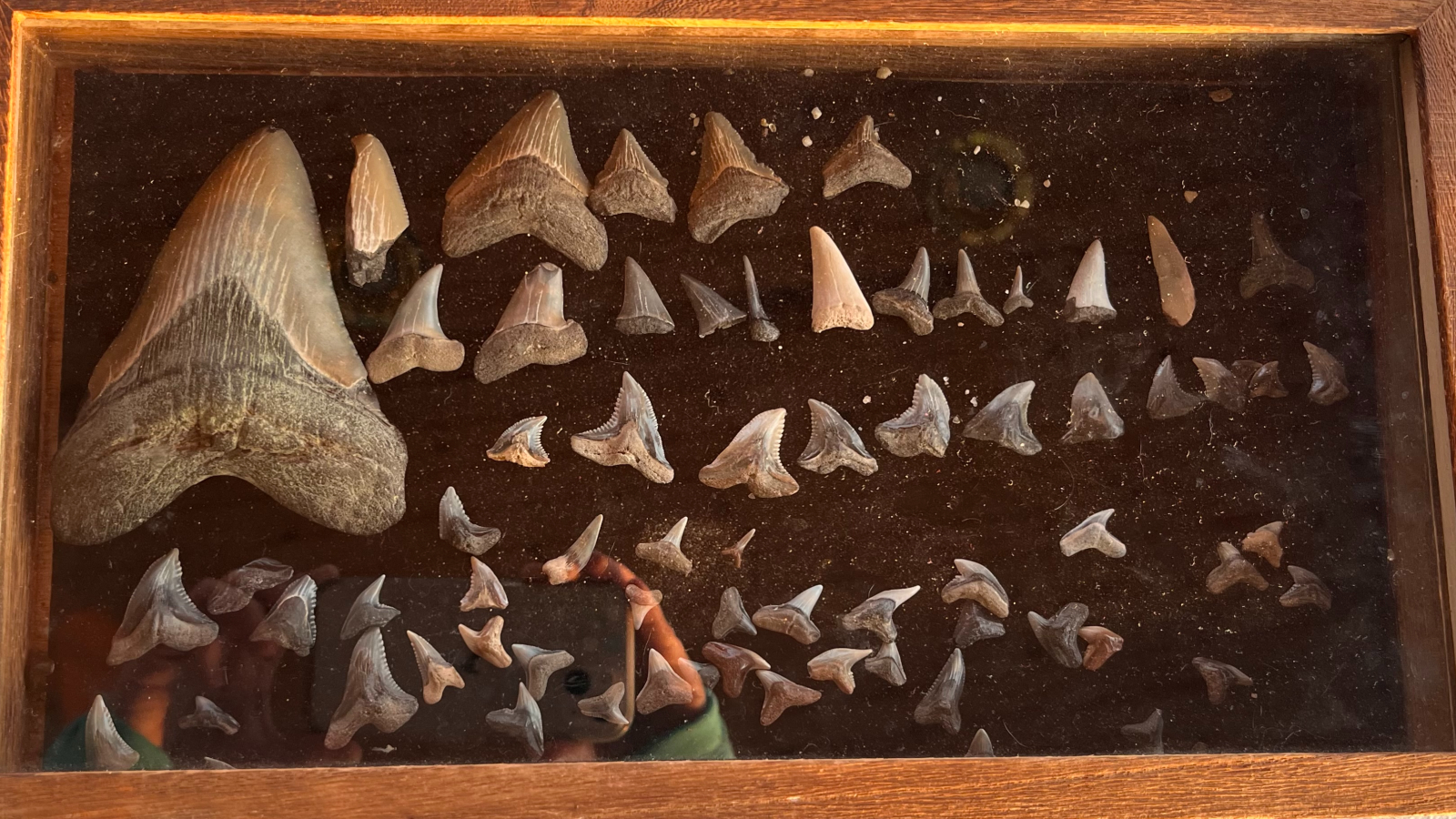Massive megalodon tooth discovered in Chesapeake Bay by 9-year-old fossil hunter
A 9-year-old girl from Maryland, who has collected more than 400 fossilized shark teeth, discovered a 5-inch megalodon gnasher on Christmas Day.
A 9-year-old fossil hunter who has collected more than 400 shark teeth along the Maryland coastline has found an enormous chomper belonging to a megalodon — the largest shark to ever swim Earth's oceans.
Molly Sampson fished out the 5-inch-long (13 centimeters) tooth on Christmas Day (Dec. 25), 2022, in shallow water on a beach at the Calvert Cliffs State Park in the Maryland region of Chesapeake Bay, Newsweek originally reported.
Molly and her older sister Natalie are both avid fossil hunters and each received a new pair of chest-high waders for Christmas to help them search for paleontological treasures, the girls' mother Alicia Sampson told Live Science in an email. After opening their presents on Christmas morning, the pair immediately set out with their father Bruce to test out their new gear. On the walk down to the beach, Molly exclaimed that she was "looking for a Meg," and within half an hour of wading in the shallows she had found what she was looking for, Alicia said.
The Sampsons took the enormous tooth to Stephen Godfrey, a curator of paleontogloy at Calvert Marine Museum in Solomons, who confirmed that it belonged to a megalodon (Otodus megalodon). Godfrey described the find as a "once-in-a-lifetime" discovery, Alicia said.
Related: What caused this massive megalodon's mega-toothache?
Megalodons roamed Earth's oceans during the Neogene period (23 million to 2.6 million years ago). The gigantic sharks likely grew to up to 65 feet (20 meters) long and were the fastest sharks to ever exist. But these apex predators were likely driven to extinction by the emergence of the smaller but more successful great white sharks (Carcharodon carcharias).
"Dr. Godfrey explained to Molly that the shark would've been the size of a Greyhound bus," Alicia said. "Molly didn't know what that was so she looked it up and could not believe it."
Get the world’s most fascinating discoveries delivered straight to your inbox.
Like modern-day sharks, megalodon sharks had cartilaginous skeletons, which do not fossilize well. As a result, most of what scientists know about the enormous predators comes from their teeth, like the one Molly found, which have a harder composition and were preserved in ancient seafloor sediments after falling out the giant sharks' mouths.
Molly is not the only child to discover a megalodon tooth. In May 2022, a 6-year-old boy in the U.K. found a 4-inch-long (10 cm) megalodon tooth on a beach in Sussex, England. But unlike other paleontology prodigies, Molly has come across multiple megalodon teeth.
"She's found 6 [suspected] megalodon teeth in the last few years but none as big as this one," Alicia said. "She doesn't think she would ever find another Meg like this one."
Related: Massive graveyard of fossilized shark teeth found deep in the Indian Ocean
Calvert Cliffs is a hotspot for fossilized shark teeth, including megalodon gnashers, because the cliffs are made from layers of seafloor sediment left behind from an ancient ocean that covered the area during most of the Miocene Epoch (23 million to 5.3 million years ago), according to the Maryland Geological Survey. As the cliffs are worn down by wave action and crumble into the water below, they release ancient teeth trapped within the sediment.
On Christmas Day, the tide at Calvert Cliffs was exceptionally low, which, combined with her Christmas present, enabled Molly to wade further out into the water than normal, Alicia said. This likely helped her to snag the massive tooth.
Molly's parents are very proud of their daughter's latest discovery and her passion for fossil hunting. "We hope that her find will inspire other kids to explore nature," Alicia said.

Harry is a U.K.-based senior staff writer at Live Science. He studied marine biology at the University of Exeter before training to become a journalist. He covers a wide range of topics including space exploration, planetary science, space weather, climate change, animal behavior and paleontology. His recent work on the solar maximum won "best space submission" at the 2024 Aerospace Media Awards and was shortlisted in the "top scoop" category at the NCTJ Awards for Excellence in 2023. He also writes Live Science's weekly Earth from space series.





